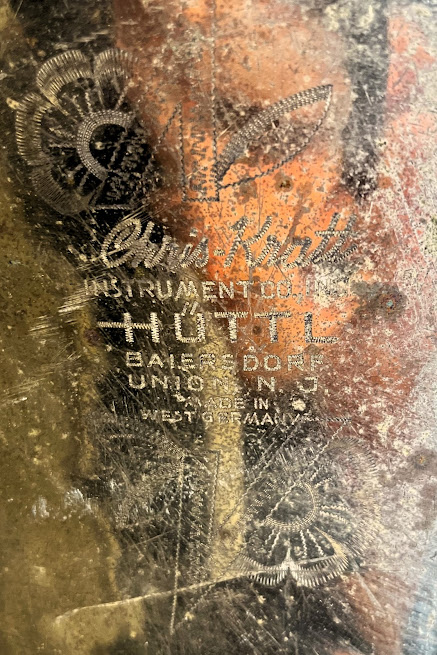For quite a few months now, I have been researching John W. "Jack" Richardson (1874-1939), who was the longest tenured tubist in John Philip Sousa's band, joining that world-class ensemble in 1904 (or possibly late 1903), and playing with it for a combined 22 years. During that period, Jack was likely the most recognizable bass player on the planet, being 6 feet 6 inches tall and anchoring Sousa's bass section on the massive upright bell Sousaphone that Sousa himself designed years earlier.
Here is Jack with Sousa's Band in St. Louis in 1904:
Shortly after the death of Sousa in 1932, Jack retired to Steelton, PA, near Harrisburg, where he opened his own cigar store, returning to what may very well have been his first love. His earliest known work as a young man growing up in Lancaster County, PA, was hand rolling cigars in Rothsville, near his hometown of Akron. He was then recruited by a cigar maker up in Newark, NY, both to work in his cigar factory, but also to play in the company band. It was at that time that Jack decided to make music his career - and the rest, as they say, is history.
Over the years, it appears that Jack owned a number of different bass horns. While he initially played a BBb helicon built by the Boston Musical Instrument Co., he eventually owned his own C. G. Conn New Invention Sousaphone, even though Sousa supplied him with a huge 4-valve Conn Sousaphone, built in 1905 it seems, to play when touring with that band.
But somewhere along the line - perhaps much later in life - Jack ended up with a small BBb concert tuba built by Rudolf Sander of Kaiserslautern, Germany. The reason I know this is that I was able to track down Jack's great nephew, Jim Richardson, who was not only aware of his famous tuba-playing great uncle, but also had in his possession Jack's Sander tuba, along with his personal mouthpiece - a gold-plated Frank Holton 51, with an unusually thin rim, and stamped "J. R." on the side, that polished up quite nicely!
When I was finally able to get together with Jack's great nephew, sharing with him everything I had been learning about Jack, he brought both the horn and the mouthpiece with him and graciously gave them to me, both for research-purposes and to eventually find a proper home for these historic items.
With these treasures in hand, my next move was to bring them out to Steve Dillon, of Dillon Music, NJ, and his famous "tuba-whisperer," Matt Walters. I was eager to get their insight on them, as well as to see what it might take to get the tuba back to reasonable playing shape - if that was even possible. I made that familiar pilgrimage yesterday (Steve, Matt and I have worked on a number of historical projects over the years)!
Here is a photo record of my visit, where Matt, and his new apprentice, Ryan, were indeed able to get the valves working again, which was the biggest issue - as well as remove the worst of the dents:
It ended up being a bigger challenge than any of us expected, but that is often how working on vintage horns goes, as Matt reminded me! And while the rotary valve rigging, with its outdated string-pulling design (which caused considerable grief for poor Matt!) would need to be upgraded in order for this little horn to be a great player, it still sounds pretty good for such an old tuba.
SIDE NOTE: Just how old the tuba is is not clear, as there is no serial number to be found on it, and we simply don't know for sure whether Jack bought it new or used. But given that he passed in 1939, it obviously was built before then, and perhaps well before then, given that Sander started making tubas in the 1890s, it seems. Here's the simple stamp on the bell:

This was not the first time Matt has worked on an old Sander tuba (he even has an old photo above his desk showing Gus Helleberg and his two sons with their Sander tubas way back when), but he did point out a strange find about this particular horn when he pulled out the old rotary valves:
"Do you know if Jack was a smoker?" he asked me. I then told him about how Jack was quite the cigar guy, and Matt then explained that there was a lot of tar, or some sort of what appeared to be tobacco residue, in the valves! Yep, that makes sense!
Finally, here is Ryan giving this historic Sander tuba its first test drive!
Next up is seeing if I can polish up what's left of the silver plating. Stay tuned for an "after" photo when that is done!
UPDATE: February 17, 2024 - with a snow day today, I tackled the polishing of this little treasure. Here is a before and after shot:
Now, if only TubaChristmas wasn't so far away! I'd love to take this horn out for a spin!
.JPG)







.tiff)











